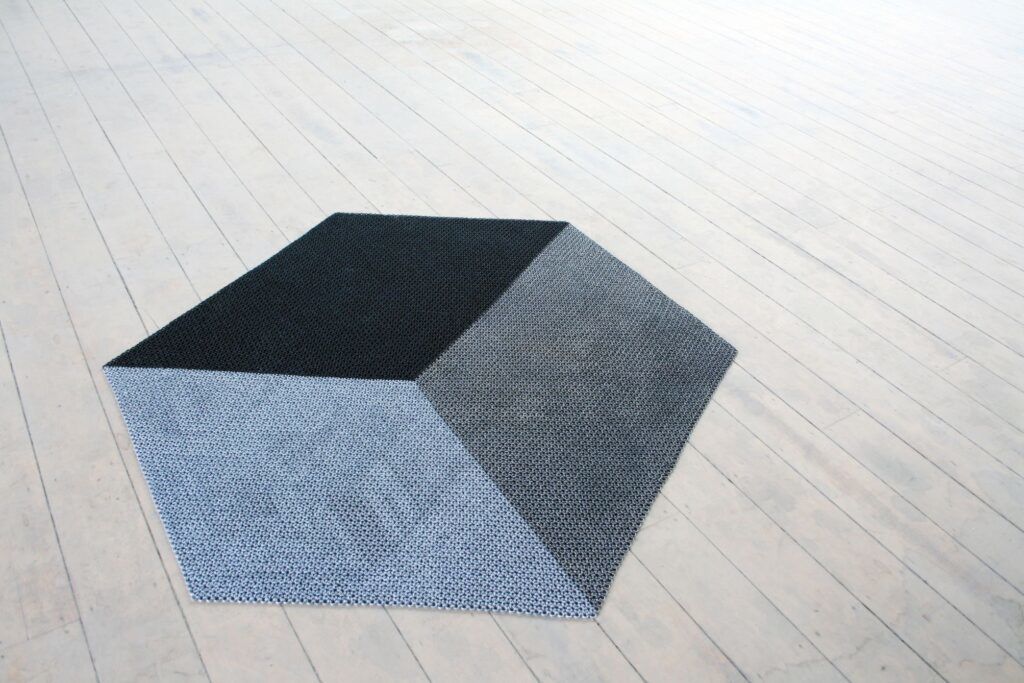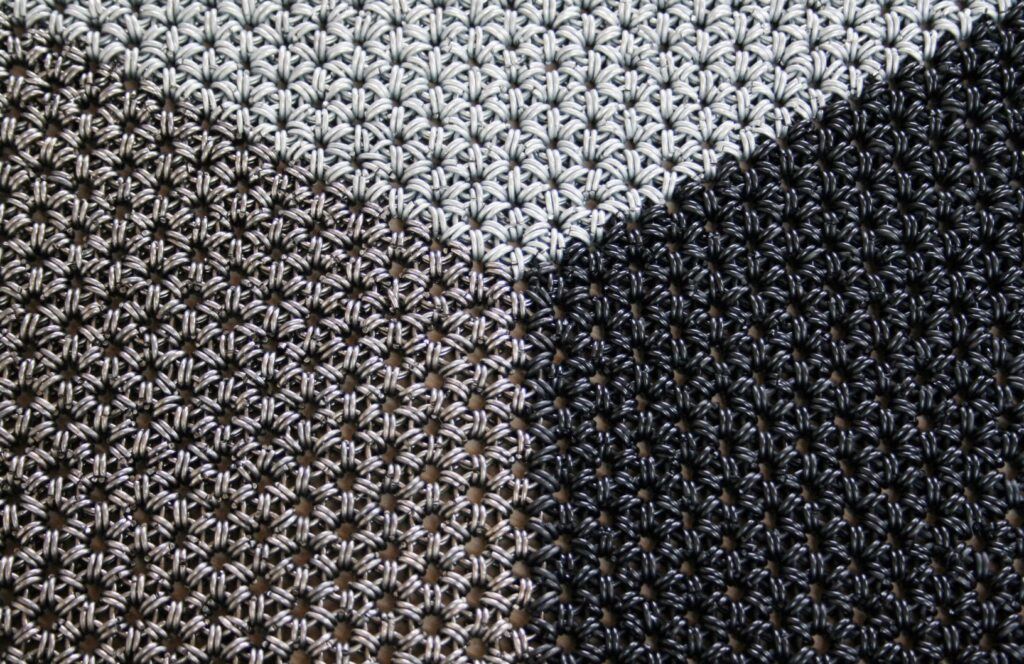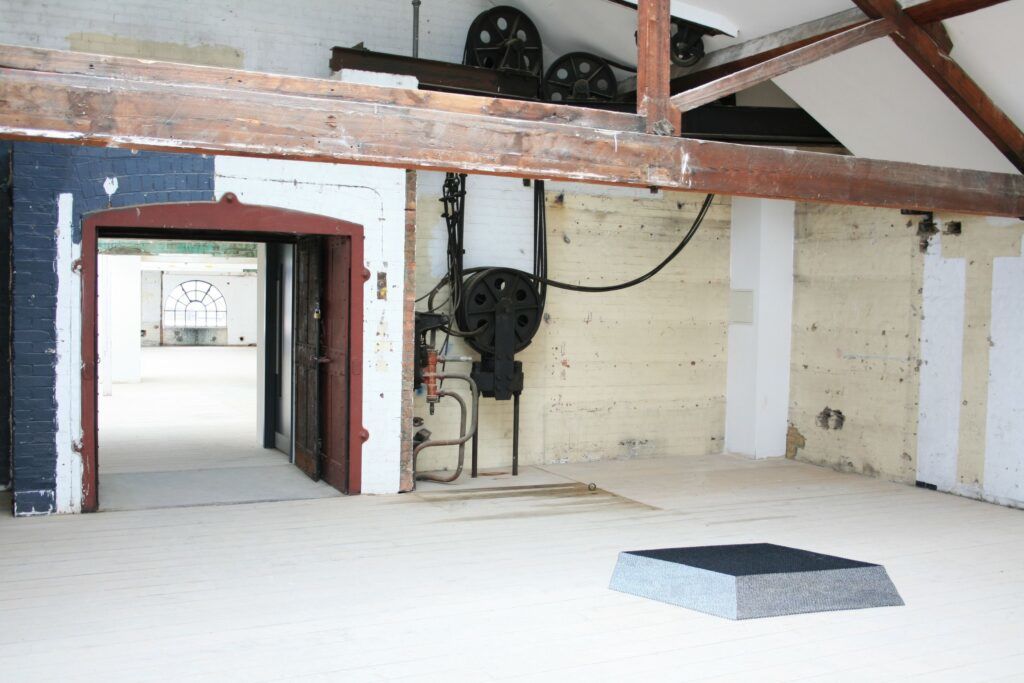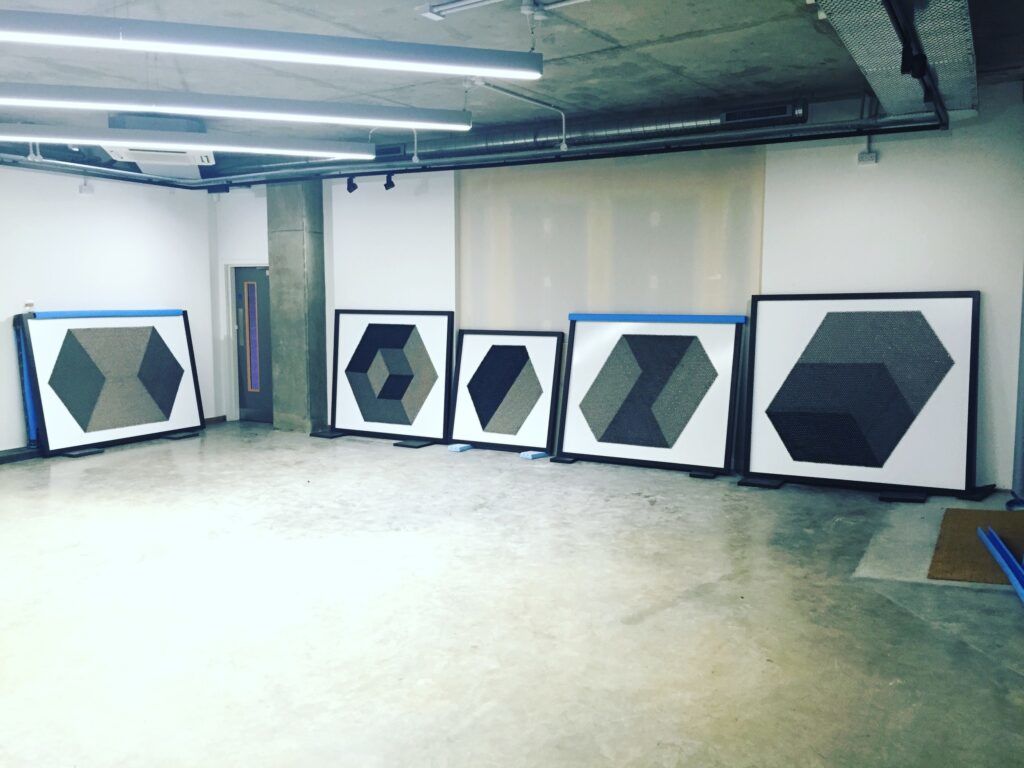Chainmail Rug Took 3,000 Hours to Make by Hand

Some would call it slave labor, others a labor of love, but the result – this chainmail rug – has a strength and durability to match the remarkable amount of time spent putting it together, link by link. If it sounds shockingly archaic, just remember: part of craft is the act of making. The finished product, for many, is an after-effect of that Zen-like construction process.

Much research went into the material history ahead of time, from ancient and medieval techniques to modern machine-made chainmails. An ancient Japanese 12-in-2 (each double-ring radiates twelve links) method was ultimately employed, tough but flexible and fit for a different form of (nearly-indestructible) contemporary carpet.

The shape itself is a play on the construction itself – a two-dimensional flooring lifted into three dimensions through components with structural density and height-maintaining stability. Three colors come from electroplated coatings, while galvanized steel wire is used throughout. Designed by Philippe Malouin and company.

More from the designer
“The Yachiyo metal rug is made using the intricate Japanese ‘12-in-2’ chain mail method. That method is virtually indestructible as well as it creates a very stable membrane, structural yet flexible. After exploring ideas for a range of furniture made using this technique, we chose to create a rug because the attention is focused solely on the 2-D object itself, the craftsmanship can be better admired this way.”

“The final piece presents an isometric rectangular prism which was created through playing with ideas of perspective, so that a two dimensional object like a rug could visually spring into the 3D realm. The metal rug is completely handmade from galvanized steel wire. The looped wire is taken and wound into a tight coil which is then hand cut into small rings. These are riveted together one-by-one in the ‘12-in-2’ pattern, which consists of 2 central rings with 12 perpendicular rings connected around. This process is painstakingly repeated to create the rug and it involves thousands of hand-manufacturing hours, since it is impossible to make by machine.”




